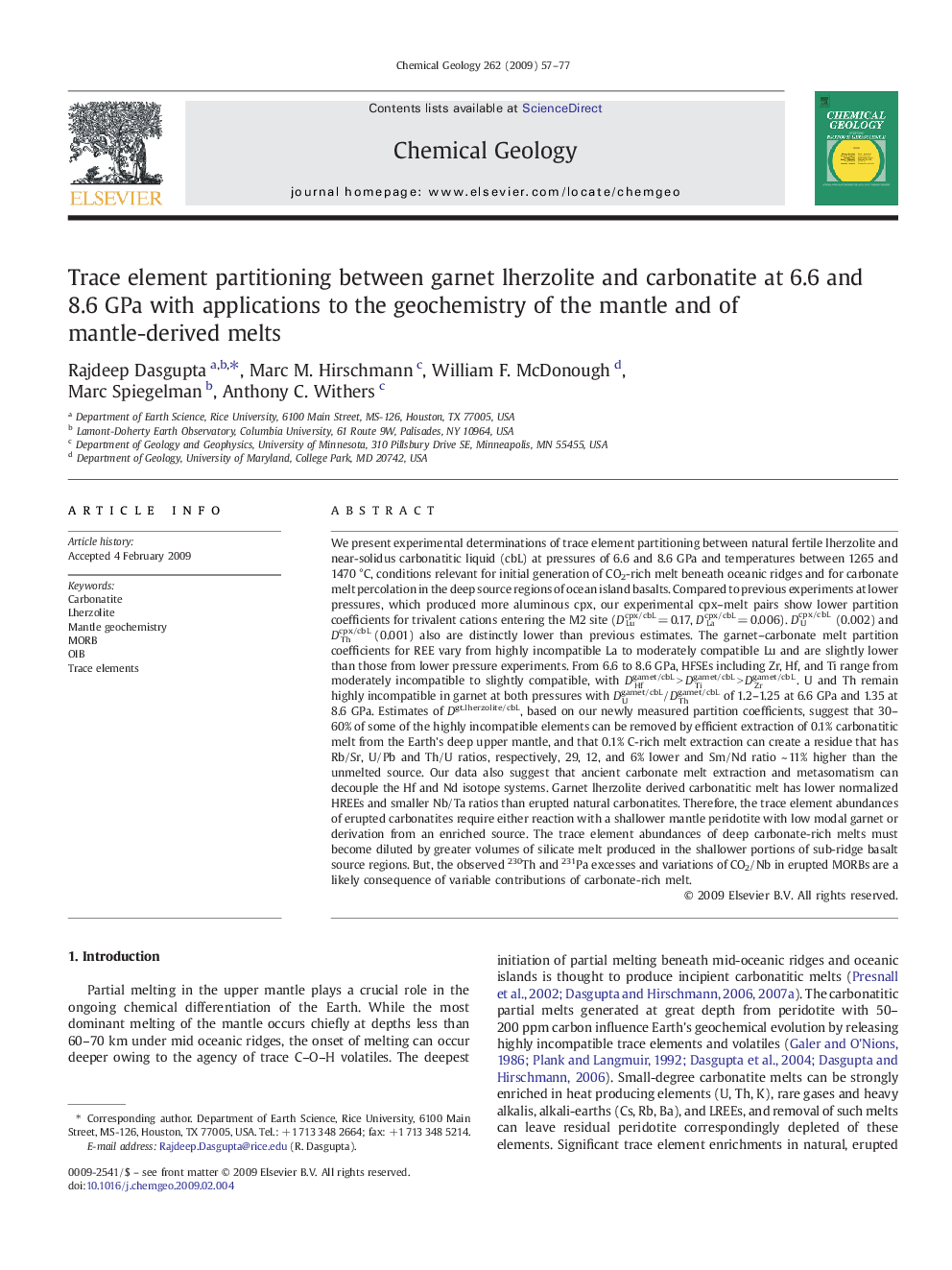| Article ID | Journal | Published Year | Pages | File Type |
|---|---|---|---|---|
| 4700446 | Chemical Geology | 2009 | 21 Pages |
We present experimental determinations of trace element partitioning between natural fertile lherzolite and near-solidus carbonatitic liquid (cbL) at pressures of 6.6 and 8.6 GPa and temperatures between 1265 and 1470 °C, conditions relevant for initial generation of CO2-rich melt beneath oceanic ridges and for carbonate melt percolation in the deep source regions of ocean island basalts. Compared to previous experiments at lower pressures, which produced more aluminous cpx, our experimental cpx–melt pairs show lower partition coefficients for trivalent cations entering the M2 site (Dcpx/cbLLu = 0.17, Dcpx/cbLLa = 0.006). Dcpx/cbLU (0.002) and Dcpx/cbLTh (0.001) also are distinctly lower than previous estimates. The garnet–carbonate melt partition coefficients for REE vary from highly incompatible La to moderately compatible Lu and are slightly lower than those from lower pressure experiments. From 6.6 to 8.6 GPa, HFSEs including Zr, Hf, and Ti range from moderately incompatible to slightly compatible, with Dgamet/cbLHf > Dgamet/cbLTi > Dgamet/cbLZr. U and Th remain highly incompatible in garnet at both pressures with Dgamet/cbLU/Dgamet/cbLTh of 1.2–1.25 at 6.6 GPa and 1.35 at 8.6 GPa. Estimates of Dgt.lherzolite/cbL, based on our newly measured partition coefficients, suggest that 30–60% of some of the highly incompatible elements can be removed by efficient extraction of 0.1% carbonatitic melt from the Earth's deep upper mantle, and that 0.1% C-rich melt extraction can create a residue that has Rb/Sr, U/Pb and Th/U ratios, respectively, 29, 12, and 6% lower and Sm/Nd ratio ~ 11% higher than the unmelted source. Our data also suggest that ancient carbonate melt extraction and metasomatism can decouple the Hf and Nd isotope systems. Garnet lherzolite derived carbonatitic melt has lower normalized HREEs and smaller Nb/Ta ratios than erupted natural carbonatites. Therefore, the trace element abundances of erupted carbonatites require either reaction with a shallower mantle peridotite with low modal garnet or derivation from an enriched source. The trace element abundances of deep carbonate-rich melts must become diluted by greater volumes of silicate melt produced in the shallower portions of sub-ridge basalt source regions. But, the observed 230Th and 231Pa excesses and variations of CO2/Nb in erupted MORBs are a likely consequence of variable contributions of carbonate-rich melt.
